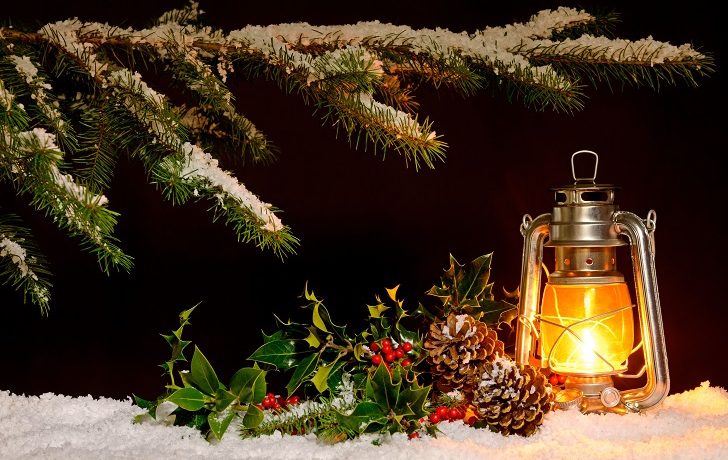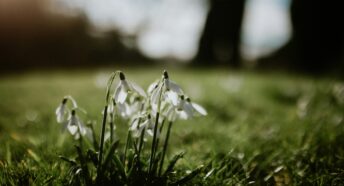The holly and the ivy…
We’ve brought evergreens – such as holly, ivy, mistletoe and fir trees – into our homes since ancient times to bring us cheer during the dark days of midwinter. Ros Stewart shares their history.
Evergreens flourish in the sparse winter landscape and, unsurprisingly given their constant presence, were thought to have magical properties. With Christmas just around the corner, you can find plenty of inspiration to decorate your home not far from your front door.
Meet me under the mistletoe
We’ve the Victorians to thank for making mistletoe the romantic symbol we know today, but it has long associations with peace. Hanging a bough of mistletoe over the threshold of a home warded off evil spirits and offered protection and shelter to anyone who entered.
The druids considered it a sacred plant with the power to revive the dead and reveal hidden treasure and as such, it could only be cut using a golden sickle.
With its milky white berries a stark contrast to leafless winter trees, it’s no wonder mistletoe became linked to the continuity of life. A bunch of mistletoe was kept in homes throughout the year to ensure the fertility of crops and livestock. The bunches were replaced at New Year leading to one tradition of them being set on fire and carried over the first 12 ridges of the first-sown field, with bad luck following if the fire went out.
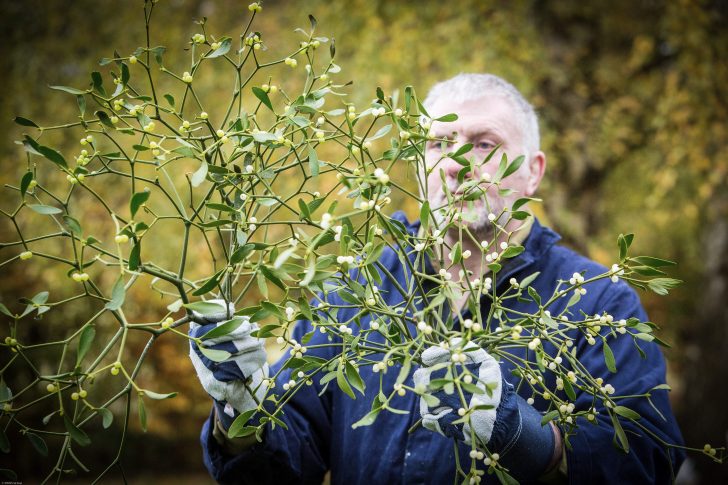
Mistletoe grows in the branches of trees in open areas with plenty of light and it favours old apple orchards. If you’re lucky you’ll see mistle thrushes, blackcaps, redwings and fieldfares feeding on its berries.
It can mainly be found in the West Midlands, with Tenbury Wells in Worcestershire designated the mistletoe capital of England. They hold a festival to honour it each year and even crown a mistletoe queen!
Deck the halls with boughs of holly
The dark green shiny leaves and bright red berries of holly make it a beloved Christmas decoration. As holly trees can live for up to 300 years, It’s long been associated with eternal life. Before it became traditional to bring fir trees into our homes, country people used it as decoration and even called it ‘Christmas tree’.
It was considered to have the ability to protect against many things including lightning strikes, evil spirits (who’d become tangled in its prickly leaves) and, most bizarrely, tax collectors! In Celtic mythology, the holly king ruled from summer to the winter solstice when he’d lose a battle with the oak king who’d rule until the next summer solstice.
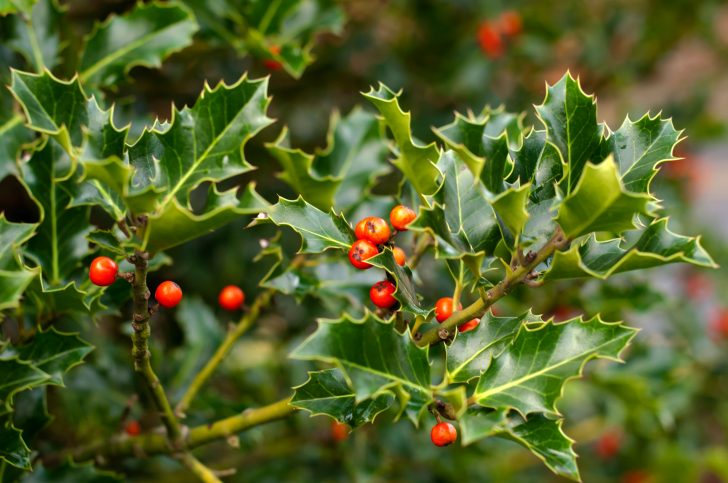
Only female holly bears berries and it’s said that a heavy crop signifies a hard winter ahead. The berries provide essential food for many birds including blackbirds, redwings, fieldfares and song thrushes, so do watch out for them when you go holly hunting.
Swinging sprays of ivy
The evergreen lobed leaves and flexible stems of ivy make it a stalwart of the traditional Christmas wreath. Like holly, it’s been revered for keeping its leaves over winter and was likewise associated with eternal life. It was thought to help with the recovery of sick animals and in Shropshire, a piece of ivy was fed to animals before midday on Christmas day to keep the evil spirits away for the coming year. In folklore, it’s binding abilities gave it a strong connection with love and friendship. It’s also thought to offer protection against drunkenness, so a very welcome addition to many households over the festive season!
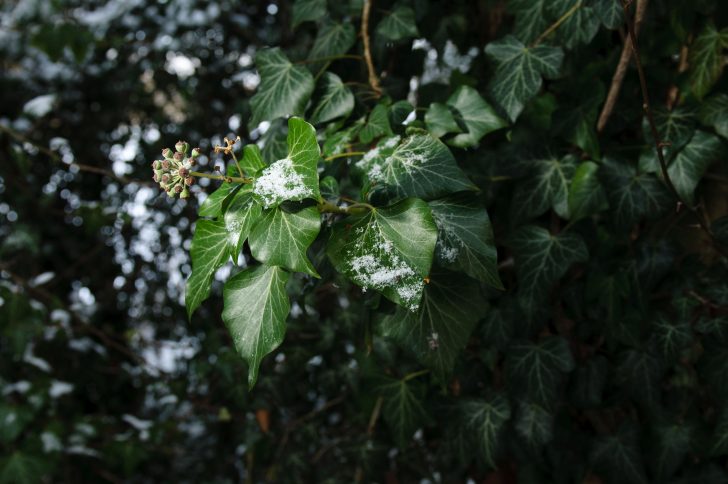
Ivy’s green flowers and black berries provide food for birds and honeybees and it’s a haven for bats and hibernating insects. You’ll not have any trouble finding it growing up trees, walls and buildings but be sure to wear gloves when handling it as the sap can harm your skin.
Oh Christmas tree, oh Christmas tree
There’s nothing quite like the twinkling lights on a Christmas tree to brighten up the darkest winter day. For many of us, adults and children alike, decorating the Christmas tree is an exciting event and marks the beginning of the festive season.
The origin of Christmas trees is difficult to pin down. It’s thought to have started in 16th century Germany when trees were brought indoors on 24 December and hung with apples in remembrance of Adam and Eve in the Garden of Eden. In earlier times, Romans used them during the festival of Saturnalia for decoration, as did pagans during the winter solstice.
The first recorded instance of a Christmas tree in England is thought to have been for a children’s party decoration in 1800 by Queen Charlotte, the German wife of King George III. A drawing of Queen Victoria’s family around the Christmas tree, published in the Illustrated London News in 1848, led to a huge increase in their popularity and made them the much-loved centrepiece of Christmas celebrations they are today.
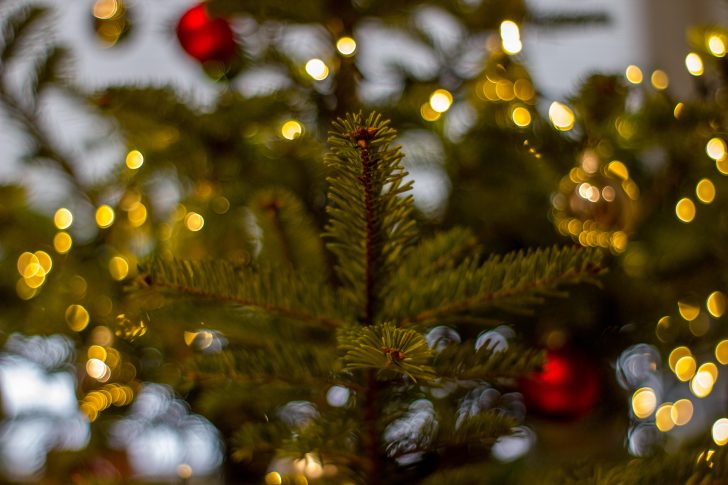
The evergreen code
You can find holly and ivy in abundance and it’s fine to pick some as long as you heed some simple rules – take only a small amount, don’t uproot the plant, don’t trespass on private land and leave plenty of berries for wildlife. And don’t forget a pair of gloves to protect your hands and some garden secateurs so you don’t damage the trees.
Fancy getting creative with your evergreens? We have a lovely guide to making a totally compostable wreath with brilliant easy-to-follow steps.
Once Christmas is over, you can pop your evergreens in your compost bin or council green recycling – making them the ultimate environmentally friendly decoration!
